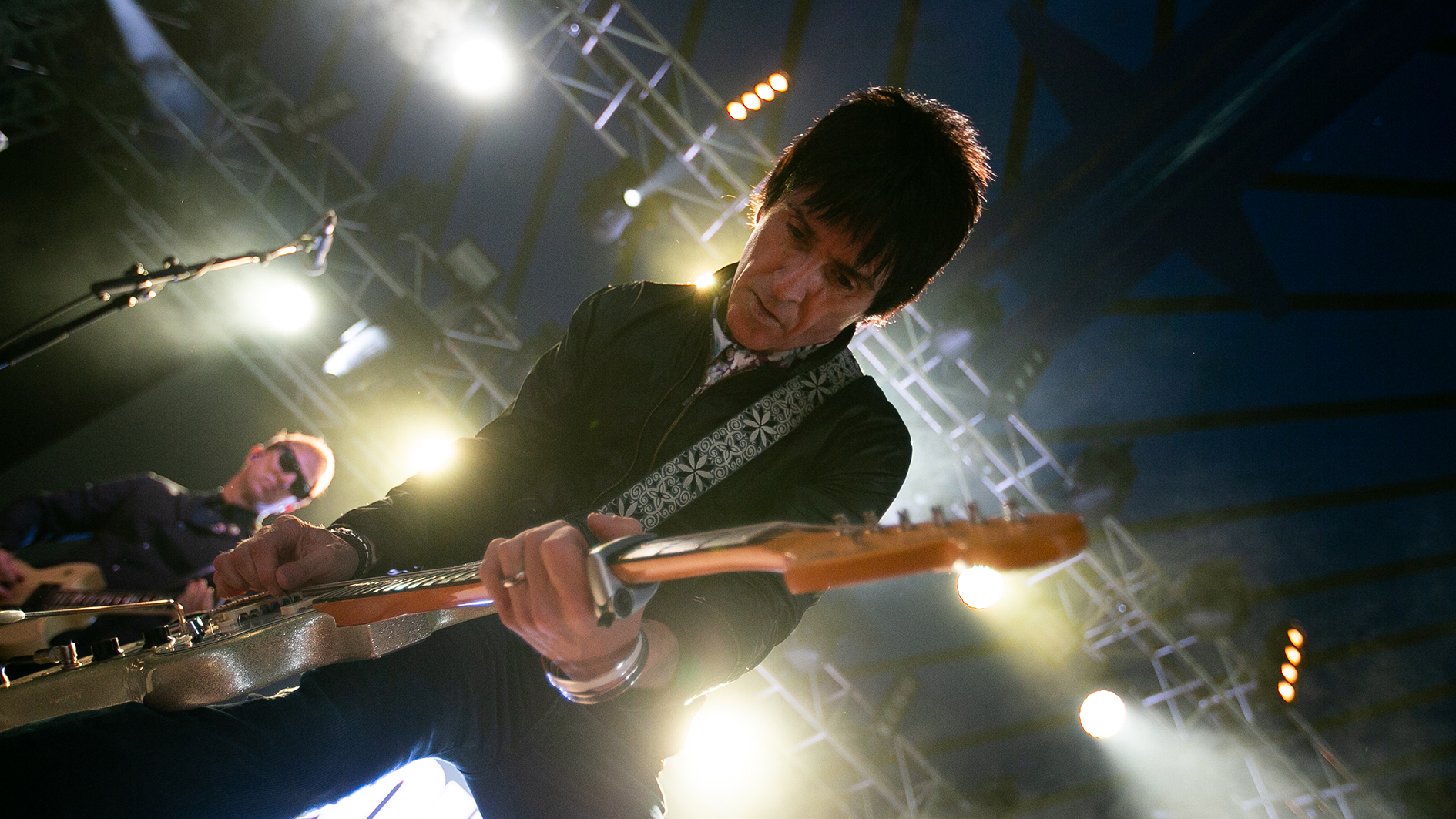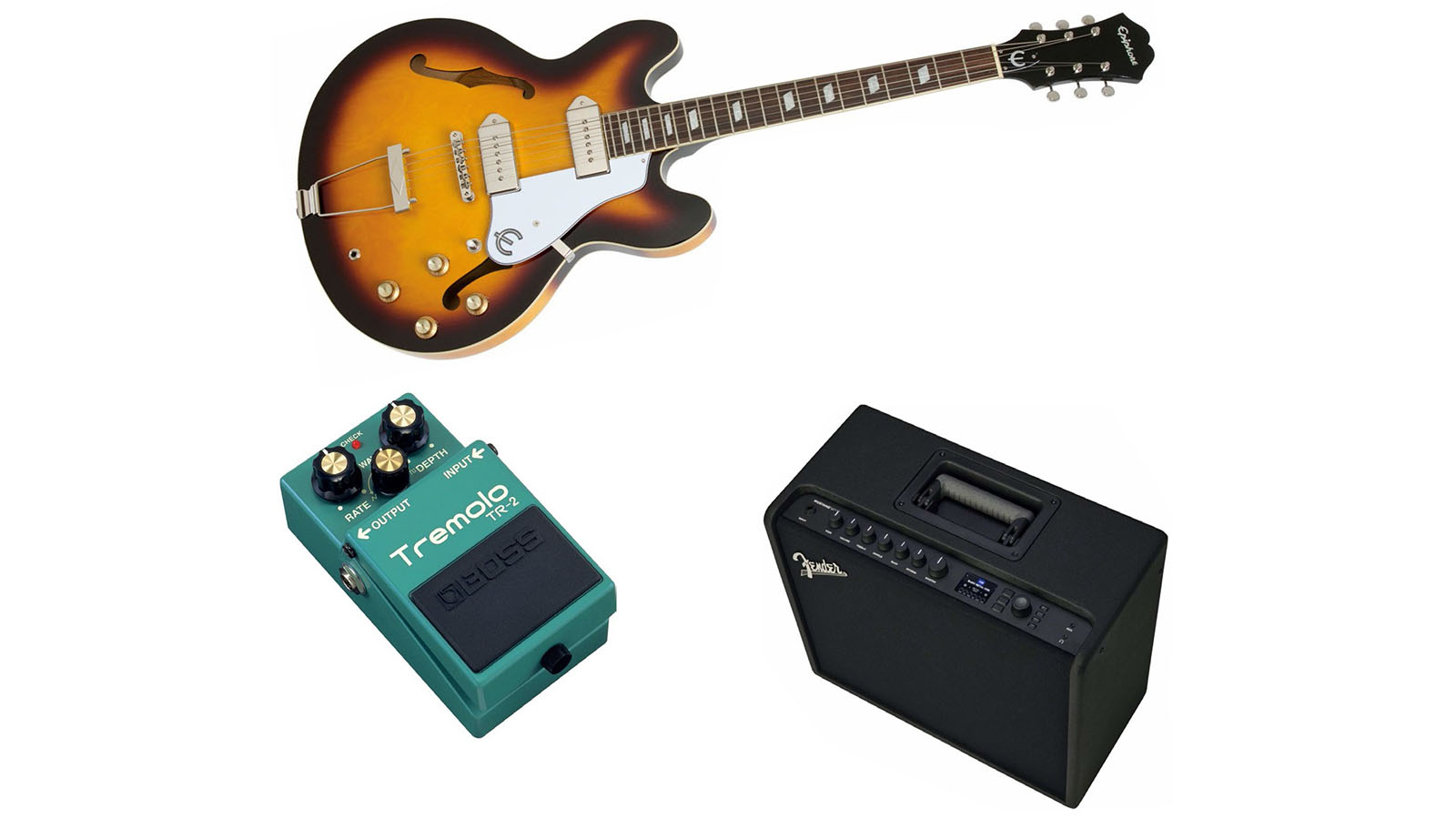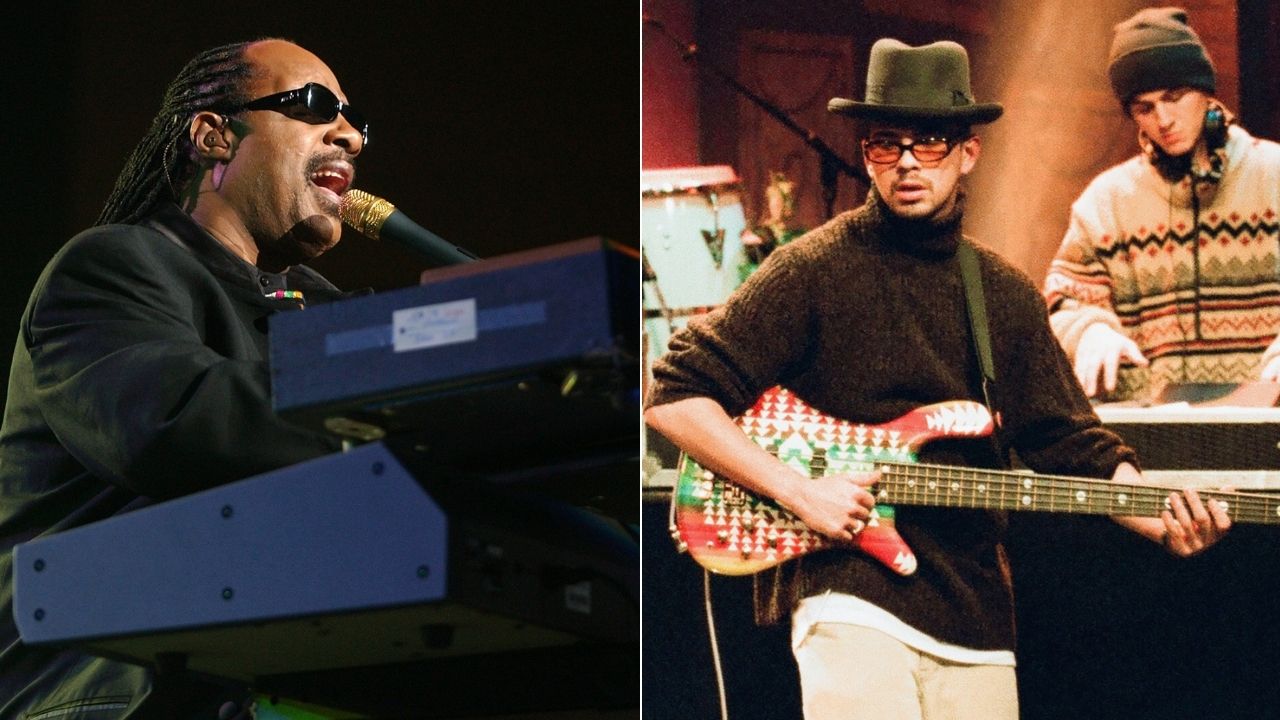The secrets behind Johnny Marr's tone on The Smiths' How Soon Is Now?
How some unusual studio tricks shaped the sound of one of the indie icons' most popular tracks

Johnny Marr said he wanted the intro to the Smiths’ How Soon Is Now? to be as potent and recognizable as Layla. But instead of writing a catchy melody or bombastic riff, he took an entirely different approach by crafting a hypnotic, pulsating groove by running his rhythm electric guitar track through four amps to generate a lush, complex stereo tremolo effect.
That trippy tremolo rhythm track along with several inventive guitar parts throughout helped make How Soon Is Now? one of the most memorable and enduring alternative music recordings of the '80s.
Marr’s performance can be broken down into five distinct parts: the tremolo-heavy rhythm, a howling doppler effect slide, a melodic line during the chorus, random lead noodling and a marimba-style line played with harmonics.
For the main rhythm track, Marr recorded a simple rhythm part using his 1963 Epiphone Casino tuned up a whole step to F# with a blackface Fender Twin Reverb with the tremolo effect off.
Next, he and producer John Porter re-amped the rhythm guitar track into four Twin Reverb amps, all with the tremolo effect engaged. The key to the pulsating rhythm is to set the first amp’s tremolo speed to about 125 bpm then run it into a second amp with the tremolo speed set to about 375 bpm to generate a bouncing triplet pattern that pulsates in a somewhat random manner.
Those same tremolo settings are duplicated with amps three and four, with amps one and two panned to the left and amps three and four panned right to create a stereo spread. The amps’ reverb provides sustain that accentuates the pulsing tremolo effects.
For the doppler effect train horn, Marr tuned the Casino’s second string down a half step to C and used a slide on the second and third strings. Then Porter had Marr record overdubs of Marr playing the same part on single strings through an AMS-DMX 15-80 set to pitch-shift settings that replicated the same intervals, raising the pitch a third on the G string and dropping the pitch a third on the B string. These three tracks were then blended together, with the AMS processing giving the tone an otherworldly texture.
All the latest guitar news, interviews, lessons, reviews, deals and more, direct to your inbox!

The melodic single-string line during the chorus was recorded in a straightforward fashion with the Casino going into the Twin with generous reverb (and possibly additional digital reverb added) and a hint of overdrive to enhance midrange, body and sustain. The random noodling lead is a sample recorded into the AMS unit with the pitch transposed up an octave that was triggered at strategic points.
The crowning touch was the marimba-like melody that Marr created by tuning each open string to the desired notes for the melody and playing harmonics at the 12th fret. He plucked the strings near the bridge to create a percussive attack and recorded several unison layers.
Individually, each part is not particularly complicated (with the exception of the meticulously crafted tremolo rhythm) but together they add up to a distinctive symphony of sumptuous sounds.
TONE TIP: Set the Mustang amp’s tremolo to a fast speed (about 375 bpm) while the TR-2’s speed is set to about 125 bpm to create a bouncing, pulsating triplet effect. The TR-2 should also be set to a smooth triangle wave rather than choppy square wave tremolo so the individual effects blend more hypnotically.
Producer John Porter chimes in
After the online publication of this article, producer John Porter wrote in to Guitar World to add further info on the recording of How Soon Is Now?…
"The article makes for interesting reading; however, having produced, largely arranged and mixed the track I’d like to correct a few inaccuracies.
"I played the slide guitar part, which to be a little more precise was a ’54 Tele (in open A tuning) through an MXR Dynacomp into an old tweed Fender Deluxe (volume 4, tone on full) then into two outboard UA 1176s.
"The main rhythm guitar track (which I believe was initially recorded through a stereo Roland Jazz Chorus as well as a DI, which I always recorded with Johnny Marr) had no tremolo at first, but after the track was put down I fed it through a Drawmer noise gate triggered by a 16th note cowbell coming from my LinnDrum.
"There were a number of other tweaks and additions to this initial guitar track, including (as Marr recalls) feeding the DI through three Twins, one of which I recall was a Blackface, and I think the other two may have been those models with the red knobs [Fender “The Twin” from the early '80s].
"On the final mix, the initial guitar DI was also fed into two separate hard-panned AMS delays - a combination of whole notes, quarter notes and triplets feeding into each other. i set them at what I thought was the appropriate level then flicked them on and off throughout the mix in a random Bo Diddley kind of pattern (the old New Orleans “shave & a haircut” groove). I then trimmed the levels of the returns and, although it’s not obvious in the mix, it did make a noticeable difference to the groove.
"Anyway, I just thought I might try to clarify matters somewhat, as I’ve been reading misinformation about this track ever since I did it. Also, anybody notice the 'Leslie' guitar in there on the B sections?"
Get the sound, cheap!

- Epiphone Casino
- Fender Mustang GT100
- Boss TR-2 Tremolo
Original gear
GUITAR: 1963 Epiphone Casino (both pickups for rhythm track and slide overdubs, bridge pickup for other tracks), Neck Volume: 10, Bridge Volume: 10, Neck Tone: 10, Bridge Tone: 10
AMP: (rhythm track) Four c. 1965 Fender Twin Reverbs with two 12-inch Jensen C12N speakers (Vibrato channel, Input 1, Bright: On, Volume: 6, Treble: 7, Middle: 7, Bass: 4, Reverb: 5.5, Speed amps 1 and 3: 1, Speed amps 2 and 4: 6, Intensity: 10); For slide, lead and harmonics parts turn up reverb control to 7 and turn vibrato effect off
EFFECTS : AMS-DMX 15-80 (pitch shift function on slide overdubs: +third on G string track, -third on B string track, +1 octave for lead fills); Boss OD-1 Overdrive (for melodic lines, Level: 7, Overdrive: 5)
STRINGS/TUNING: Ernie Ball Regular Slinky .010-.046/F#, B, E, A, C#, F# (rhythm part), F#, B, E, A, C, F# (slide part), F#, E, F#, G#, A, C# (harmonics)
PICK/SLIDE: Ernie Ball Medium/chrome-plated brass
Chris is the co-author of Eruption - Conversations with Eddie Van Halen. He is a 40-year music industry veteran who started at Boardwalk Entertainment (Joan Jett, Night Ranger) and Roland US before becoming a guitar journalist in 1991. He has interviewed more than 600 artists, written more than 1,400 product reviews and contributed to Jeff Beck’s Beck 01: Hot Rods and Rock & Roll and Eric Clapton’s Six String Stories.


